This week we’ve taken a look at four cities across the UK and compared them to their representations in popular culture: Sheffield in The Full Monty, London’s neighbourhood of Peckham in Only Fools and Horses, Manchester in the songs of the Smiths and Edinburgh in Trainspotting.
You shared your experiences of the cities and explained how they’ve changed since these well-known depictions – or indeed how they were never accurately shown in the first place.
Are there other cities in the UK that have been shaking off the image created by popular films, TV shows, novels or bands? Share your stories in the comments below.
Sheffield: ‘It doesn’t feel like a city in decline any more’

In 1997, The Full Monty presented a vision of Sheffield hit by de-industrialisation, as four former steelworkers struggled to make a living. But did the film tell the city’s full story? And what is life like in the Steel City now? We heard from past and present residents about the city’s regeneration, the challenges it still faces – and its friendly spirit:
A lot of comments here are about how great parts of Sheffield are. I live in Sheffield and yes, I fully agree, they are, and they were great even at the time the film was made. But the film wasn’t about those parts. It was about redundant steelworkers ... Parts of Sheffield were and are still very deprived, and it’s interesting to read something by someone who’s taken the time and trouble to go and talk to people living in those areas about their views of Sheffield now
It’s a great place to live. However, great swathes of the place feel like we’re the city the UK forgot. Sheffield has always been a place of enormous contradictions, ‘a dirty picture in a golden frame’ as it used to be put; with the contrast of heavy industry and the beauty of the Peak District. That still lasts, with the affluent areas of the south west of the city being lovely, while other parts have terrible poverty.
I’m just old enough to remember the heady days of the 70s and the city described in the promotional piece at the start of TFM - in fact, I remember watching it in school! I remember the industrial powerhouse of the Don Valley and a time when pretty much everyone in my family was employed in the steel industry, either directly or indirectly. By the time of the Full Monty, only my father was and even he was made redundant not long after.
Now, as the article says, the Lower Don Valley still has areas of industrial wasteland, with derelict and razed sites still awaiting development thrity years after ... Sheffield has consistently failed to secure investment, especially by big business since the demise of the coal and steel industry ... It doesn’t feel like a city in decline any more, but definitely like one still struggling to move forward although there’s still determination to make it move.
- sigridir
Having been born and raised in the Shiregreen area, it’s amazing to see how much has changed in my city even from when I was a kid born in ‘90. The city centre has seen an amazing turn around within the last 10 years. From a grey, dull, out-of-date feel, it is now a vibrant cultural centre, even despite its compact nature.
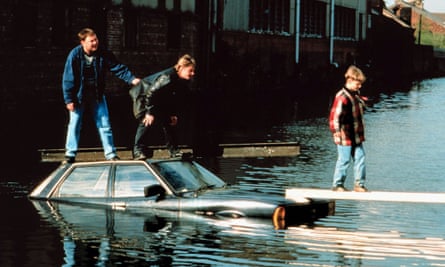
I grew up in Attercliffe near the Aquaduct club. I used to fish for sticklebacks in that canal. At night all you heard was the hammers going in the forges. I go back every now and then. It's desolate. Very few people around. The pubs which used to be so busy are all empty or shut. The wooden escalators in Banners are probably all rooted away. Derelict petty much sums the area up.
Sheffield is probably an extreme example of the changing jobs market. There are knowledge based businesses based around the centre, but there has been a big fall in skilled labour. The universities have a high proportion of students staying in the city after graduation, which is due to the proximity to the Peak District and the friendliness of the place.
Sheffield has its share of problems, but in many ways it is succeeding despite the odds. The Full Monty was never more than a snapshot of one aspect of the city, but the truth is that it needs investment, not more cuts. If there is a sense that the city is depressed, it is due to the amount of money that people see being invested in the south east. Nobody wants hand outs, just a fair crack of the whip!
Oh and by the way, the people are friendly, welcoming and proud of their city!
Peckham, London: ‘The place is seething with boutique cafes’
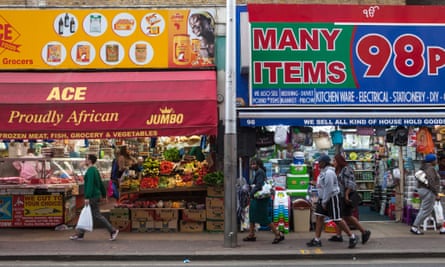
While the TV sitcom Only Fools and Horses was set in the South London area of Peckham, it was not, in fact, filmed there. The discussion below Stuart Jeffries’ piece focused on the changing demographics of the area over the years and the impact of gentrification:
There was an M&S in Rye Lane, and Jones and Higgins, a biggish department store in the old fashioned 'Grace Brothers' style down at end of the 'Lane', in 1979 when I lived in Peckham. And there was a cinema. Rye Lane was still, but not for long, dominated by white working class.
The art colleges made no impact at all on the area at that time, and the now trendy 'on the Rye' pub, which featured in Muriel Spark's novel, "The Ballad of Peckham Rye", was still a rough drinkers hangout, a few of which can still be found in Peckham, though not in the trendy Bellenden road 'village' area.
The park, where William Blake famously saw his vision of angels, was pretty decrepit in those days, and still in the Victorian style it had been built in, and the Lido at the bottom end was, amazingly, for a few more years, still open in the summer. In those times, there was also explicit racism evident in the attitudes and language of many of the local white families.
At that time it was impossible to imagine that 30 years later my daughter and her friends would be having a night out in the Lane in trendy clubs and bars. All change for the better in my view.
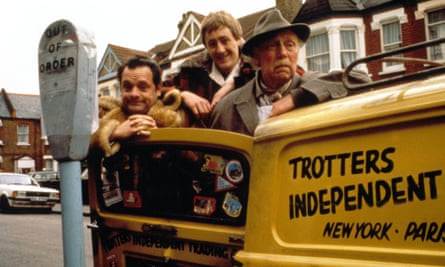
The change has been happening for a long time - just reaching a peak now, in tandem with the vile house prize frenzies. The impact is that the place is seething with boutique cafes, useless trinket shops, ironic fashion, over egged delis that sell barely anything, queues for trendy bars full of hooray hipsters from elsewhere. Bellenden Road was the trigger, the 1990's Peckham Project bigging up the benefits of development and refurb at great cost to a tiny area. Sadly it just doesn't spill over onto the dreary and neglected estates where residents struggle to keep shops open. North east Peckham will be the last to fall - really deprived, large estates, Old Kent Road and not a flat white or dirty burger for miles. If you can stand the crowds, you'll love it.
If only there had been a sitcom on tele at the same time that more accurately reflected the people of Peckham? https://www.youtube.com/watch?v=ZLmr9QtL5MA&list=PL5gOUtKzgIyj_9iNFOrfBKmOZXw9VJls5
I have worked at Peckham library for three years; I lived in Camberwell for eighteen months and now live in New Cross. One of the most striking things about Peckham is the very clear class divide. Shoreditch and Hackney have now become far too expensive for students and young people to rent in, and so South London has become far more attractive. But there is no dialogue between the local populace and those more transient residents.
Manchester: ‘The city has lost its character’
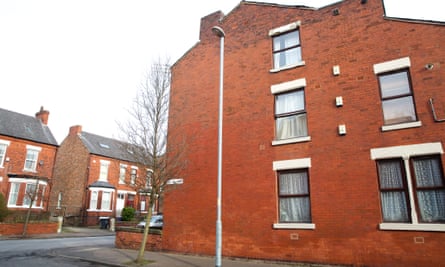
From song lyrics to iconic photoshoots, Manchester in the mid-1980s provided both the inspiration and backdrop for the Smiths. But in the past 30 years, the city has seen a huge amount of change. Dipping into nostalgia, you told us how Manchester – and Salford, too – have transformed since then:
Feel fairly qualified to comment as was a teenager in the too brief period The Smiths did their stuff, getting the bus into the big city with mates on Saturdays and heading for Afflecks, going to the ‘Hac’ before it hit the big time, starting working in the city centre in the late 80s and living in the area until about 5 years ago, but still making regular trips there for the Uni.
Being in my mid 40s now makes me vulnerable to accusations of being nostalgic and maudlin, but can’t help feeling the city has lost its ‘character’ ... The dominance of the chains, whether that be bars, restaurants, shops or coffee shops, coupled with the gentrification of the city centre, and the proliferation of well-heeled residents, has imposed a generic, non-local, feel and whilst this may be more cosy for a forty-something I’m guessing the city is less of an adventure for the impressionable youth from the provincial towns they jog round ... The issues the Smiths sang about are still present, but maybe slightly further from the city centres as the result of population shifts with previously deprived residential suburbs now housing more affluent people and the more deprived living further out.
- kurtvonn
Two places that had the heart ripped out of them by the developers were Moss Side and Salford, both of which are now dominated by drive-thru dual carriageways. I grew up in Old Trafford in the sixties and seventies so Alec Road (as we called it) in Moss Side was the local shopping Mecca. It was vibrant, shop-lined, multi-cultural and full of life so obviously needed to be demolished and converted into J.G. Ballard's worst nightmare. Are there any of those developers, city planners, architects still around? Is it too late to put them on trial for crimes against urbanity?

I grew up in Chorlton (my old dear still lives in the house she bought there in 1958 for £900). I remember the row of shops on the main road near us comprised (in order): a general provisions store; a butcher; a pet shop; a chemist; an offie; a bread shop; a sweet shop; a chippy; another butchers. The chippie's still there, there's a Bargain Booze, a deli, the rest are bars. Changing demographics and shopping habits I guess - the road where my mum lives is a great mix of older Irish and newer professionals. The other difference is when I was a kid, we played football each evening on the street until we were dragged in, now there's nowhere to park, nevermind a game of footie!
I lived and worked in Manchester from 1982 until 2008.
I think what changed it was the IRA bomb. Before that the centre was full of idiosyncratic small businesses in amongst all the familiar brand names. The re-development gradually got rid of all those small businesses and turned it into an identikit city centre.
I went there a week or so ago and for the first time it actually felt like a city. More traffic, more building works and more ghastly areas like Spinningfields.
Edinburgh: ‘The only thing Leith needs is a little bit more respect’
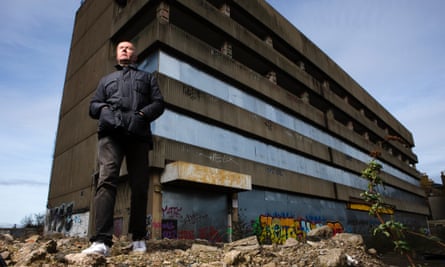
Irvine Welsh’s novel about the experiences of a group of heroin users in Leith was first published in 1993, followed by the hugely popular film in 1996. The area depicted was struggling with poverty yet facing an economic upturn. You painted a picture of life in Leith, reflecting on its “on-again-off-again” regeneration:
Overheard in a Leith pub in the mid 90's after the book but before the film I think:
"See that fucking Irvine Welsh he's giving Leith a bad name with his fucking book cos there's fucking swearing every fucking second word"
Trainspotting is a major contributing factor to Schemie pride in Edinburgh. Add Acid House and Looking after Jojo and a culture begins ...
People like me, born and bred in Niddrie are never finished telling folks where we are from.
Interesting piece, especially interesting to me as I've relocated to Leith just a few weeks ago - entirely by choice.
Yes, the place has rough edges but it also has an authenticity, and a host of exciting variety and extreme contrasts as "Old Leith" and " New Leith" co-exist in close proximity.
I'd much rather live here, where there is real character (good, bad and everything in between) than in the kind of environment in the South of England that I came from - where every town is so bland and so charactless, and so much a clone of all the others, that each is indistinguishable from all the rest.
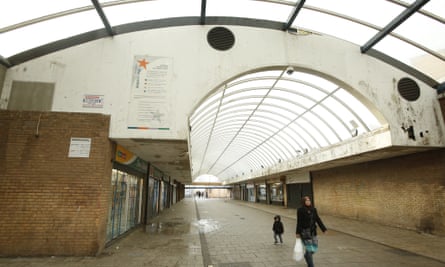
Leith is full of fantastic shops, great wee cafés and a load of really good, honest and kind people that make Edinburgh a better place to stay.
As one poster says "leith is all you need".
Ask for directions in the city centre: people look pretty alarmed at the human interaction and, god forbid, eye contact & walk away.
Ask for directions in Leith and the person would be more likely to take you there themselves and have a good wee chat about it.
Leith has a sense of community so sorely missing from the rest of this lovely city.
The failed tram plan near ruined Leith Walk but the area remained resilient. The only thing Leith needs from the council is a little bit more respect.
The people of Leith have known for a long time they have to get by with out any help from the council. Want to build an incinerator, dump it in Leith. Spread the emergency housing/guest houses around the city? No dump it in Leith. Invest in the port? Pfft, why its in Leith. Closing Waterworld and spending all that money on the Commie instead? Leith Walk might now be improving but only after a vibrant shopping street was left to decay over generations.
A reasonably good example of Leith's on-again-off-again regeneration is Out of the Blue, the former drill hall on Dalmeny Road. A brilliant cafe and co-operative hub for locals and visitors.
Also recommend a wee look at this short video on the Banana flats in Leith. STV actually doing community telly!
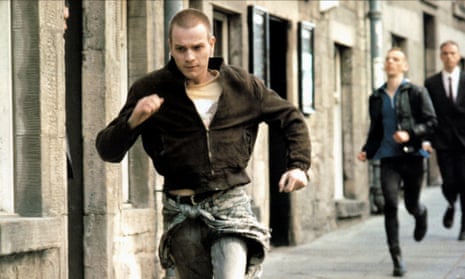






Comments (…)
Sign in or create your Guardian account to join the discussion